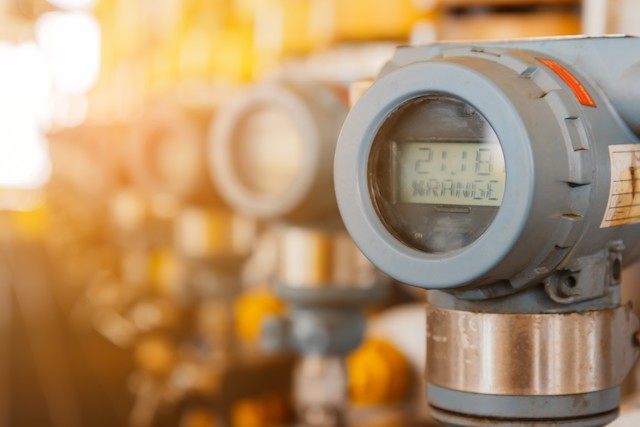How Control Valves Work
05-08-23

The patent office issued the first patent for a ball valve in 1871.
Control valves regulate the flow of fluids, gases, or steam for a variety of applications. Uses for control valves range from controlling the temperature and pressure in a heating system to regulating the flow of chemicals in a manufacturing process.
Knowing how control valves work is critical to ensure safe and efficient operation.
In this article, we’ll take a deep dive into the inner workings of control valves. We’ll explore different types of control valves, their parts, and how they function.
Read on for a comprehensive overview of how control valves work and their importance in regulating fluid flow!
Control Valve Parts
Before you can understand how a control valve works, you need an overview of each part. Control valves are complex devices consisting of several parts that work together to regulate the flow of fluids.
Each of these parts plays a critical role in the proper functioning of a control valve.
Body
The control valve body is the outer shell of the control valve. It contains and protects the internal components that control the flow of fluid.
The two main parts of the body are the valve bonnet and the valve plug. The valve bonnet houses the internal components of the control valve, while the valve plug moves within the valve body to regulate flow.
Actuator
The actuator provides the force to move the valve plug. There are three main types of actuators:
- Pneumatic
- Electric
- Hydraulic
Pneumatic actuators use compressed air to move the valve plug, while electric actuators use electricity. Hydraulic actuators use pressurized fluid.
Positioner
The positioner is the component of the control valve that ensures the valve plug is in the correct position to regulate the flow of fluid. It receives a control signal from the process control system and adjusts the valve plug position to achieve the desired flow rate.
Control Signal
The control signal isn’t a physical part. Rather, it’s the input to the control valve that tells it how much fluid to allow through. The type of signal depends on the type of actuator being used.
If any of these parts fail, it can result in a loss of control over the fluid flow. A failure can lead to safety hazards or decreased efficiency.
How Control Valves Work: An Overview
The purpose of control valves is to regulate the flow of fluid through a pipe. The position of the valve plug determines the amount of fluid allowed to pass through the valve.
When it receives the control signal, the positioner adjusts the position of the valve plug. This positioning either increases or decreases the flow of fluid through the valve.
If the signal calls for an increase in flow, the positioner moves the valve plug up, which opens the valve and allows more fluid to pass through. If the signal calls for a decrease in flow, the positioner moves the valve plug down, restricting the flow of fluid through the valve.
The valve body is a strong shell with several ports and channels that allow fluids to flow through the valve and into the pipe. The valve plug is the part that moves within the valve body and is designed to fit snugly within the valve body to prevent leaks.
Control valves often work in conjunction with other process control devices like sensors and controllers to regulate the flow of fluid in a system. The sensors measure the flow rate of the fluid, and the controller sends a control signal to the positioner, which adjusts the position of the valve plug to achieve the desired flow rate.
Types of Control Valves
There are several different types of control valves, each designed to regulate the flow of fluids in different ways.
The control valve arrangement and how the parts work together determine the type of control valve. The choice of control valve type depends on the specific requirements of the application.
Globe Valves
Globe valves are the most commonly used type of control valve. They have a globe-shaped body and a valve plug that moves up and down to control the flow of fluid. Globe valves are a popular choice for the oil and gas industries.
Butterfly Valves
Butterfly valves have a flat disc that rotates within the valve body to control the flow of fluid. This kind of valve is suitable for applications like water distribution.
Ball Valves
Ball valves have a ball-shaped plug that rotates inside the valve body to control the flow of fluid. Their simpler design makes them a good choice for plumbing systems in homes.
Diaphragm Valves
Diaphragm valves have a flexible diaphragm that stretches up and down to control the flow of fluid. They are easy to maintain and repair and work for a broad range of applications.
Because the diaphragm is the only part that touches the fluid, this kind of valve works well for applications requiring sterilization.
Pinch Valves
Pinch valves have a rubber sleeve that squeezes to stop the flow of fluid. They are commonly used in clinical applications like medicine and laboratories.
Long-Lasting and Durable Control Valves
We hope this guide to how control valves work has been helpful and informative. Engineers and operators need a good understanding of each type of control valve and their parts to choose the right one for the job.
Control valves use several parts to regulate the flow of fluid through a pipe. The positioner controls the valve plug using a control signal from the process control system.
Everlasting Valve has over a century of experience as one of the leading industrial valve manufacturers. Contact us today to learn more about our top-quality valve options!